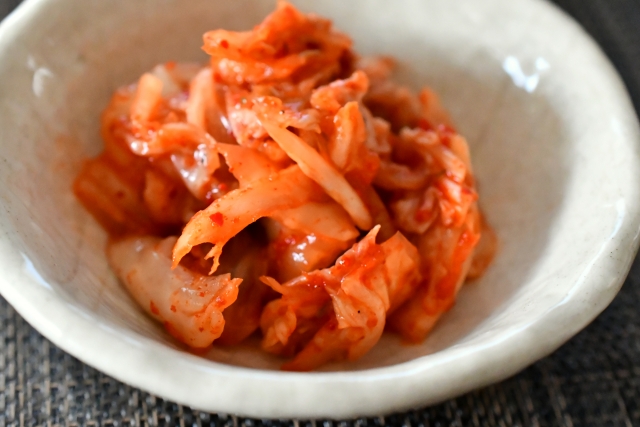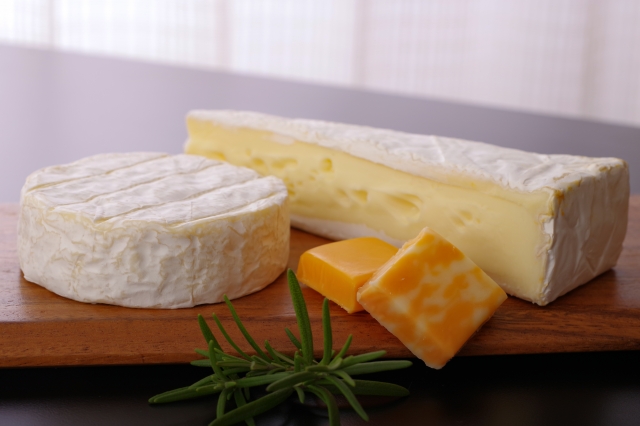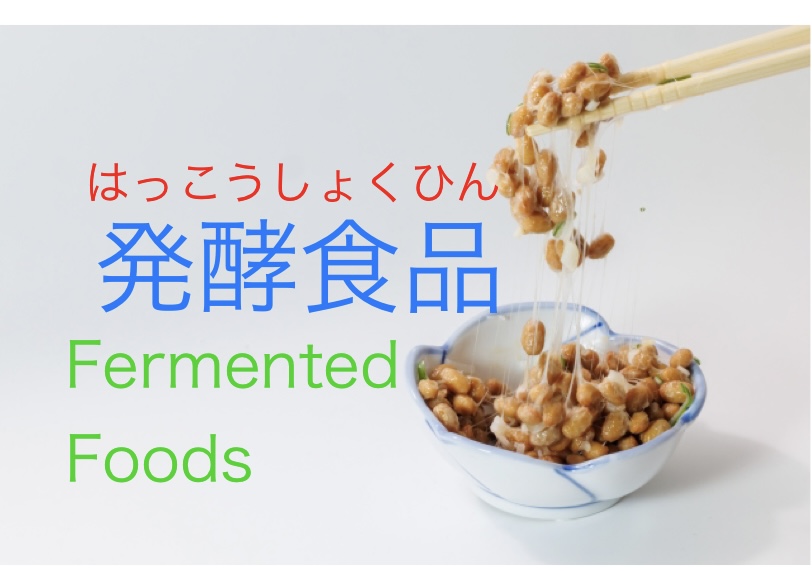
発酵食品にはいろいろありますね。
発酵食品とは、微生物が食品を分解する働きにより作られた食品のことをいいます。
発酵をうながす微生物には、細菌、酵母、かびなどがあります。
細菌の中の乳酸菌は、ヨーグルトやキムチを作るときに役立ちます。

細菌の中の納豆菌は、大豆を発酵させて、納豆を作ります。
細菌の中の酢酸菌は、お酢(す)を作ります。
糖を分解して、アルコールと二酸化炭素を生み出すのが、酵母です。
酵母は、パンやお酒を作るときに必要です。
かびを利用した発酵食品には、チーズがあります。ブルーチーズとカマンベールチーズを作るときに、青かびが使われています。

パンをしばらくほっておくと、青かびがついてくさらせてしまうことがあります。
微生物は、人間にとって役に立つときもあれば、害になることもあります。
日本の伝統的な調味料である醤油(しょうゆ)や味噌(みそ)を作るのにも微生物の発酵の力が必要です。
発酵食品のよさは、「長期保存ができる」、「栄養価が高まる」、「特有の風味や香りが付き、おいしくなる」などがあります。
Fermented Foods
Fermented foods are foods produced by the action of microorganisms that break down food.
Microorganisms that induce fermentation include bacteria, yeast, and fungi.
Among bacteria, lactic acid bacteria are useful in making yogurt and kimchi.
Bacillus natto, among bacteria, ferments soybeans to make natto (fermented soybeans).
Acetic acid bacteria make vinegar.
Yeast breaks down sugar to produce alcohol and carbon dioxide.
Yeast is necessary for making bread and alcohol.
Fermented foods using mold include cheese. Blue mold is used in the production of blue cheese and Camembert cheese.
If bread is left alone for a while, it can become rancid with blue mold.
Microorganisms are sometimes helpful to humans and sometimes harmful.
The power of microbial fermentation is necessary to produce soy sauce and miso, traditional Japanese seasonings.
The advantages of fermented foods include preservation, increased nutritional value, and a unique flavor and aroma that makes them delicious.




コメント